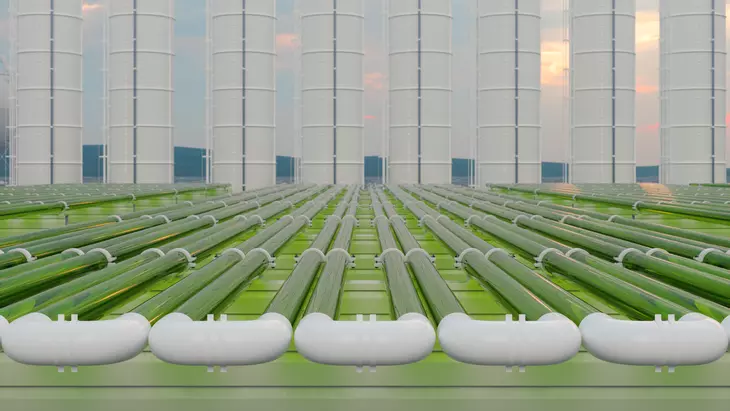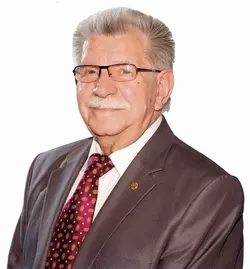In order for Carbon Capture and Storage (CCS) technology to significantly contribute to the decarbonization of the Romanian energy system, it needs to be approached with an accelerated mindset rather than a conservative one. This approach should not further inhibit what could be the true differentiator for the oil and gas industry in Romania, which has a history of over a century and a half. Large-scale projects need to be implemented at this moment for CCS to have any chance of cost reduction as rapidly as other rapidly advancing low-carbon economy elements, such as renewable energy.
Author: Professor Dr. Eng. Nicolae Iliaș, University of Petroșani VP of Section ”Petroleum, Mining and Geonomic Engineering” Academy of Technical Sciences of Romania
Various forecasts in recent years regarding the Energy Transition show that CCS will capture less than 5% of emissions by 2050. This means that CCS will not advance significantly without a rapid and profound change in commercial incentives. As world leaders gather at various international conferences on environmental themes, they should remember that nearly every scenario predicting a future where temperature growth is limited to 2 degrees (or even less) includes a significant role for CCS.
The global community has recognized the urgent need to address climate change and reduce greenhouse gas emissions, and CCS has emerged as a promising solution for reducing carbon dioxide (CO2) emissions from various industrial processes and power generation. This material aims to explore CCS technology, its benefits, and its potential contributions to achieving a sustainable future, starting from the fundamentals of this technology and a correct understanding thereof.
Understanding CCS Technology
CCS involves capturing carbon dioxide emitted from various industrial processes, compressing it, transporting it to a storage site, and then safely and permanently storing it underground at significant depths.
Carbon Capture: The first step of CCS involves capturing CO2 emissions from power plants, industrial facilities, or direct air capture (DAC) devices. Various capture technologies, such as post-combustion, pre-combustion, and oxyfuel combustion, are used to separate CO2 from flue gases or other emission sources.
Transportation: After capture, CO2 is compressed and transported through pipelines, ships, or trucks to suitable storage locations. Efficient transportation infrastructure is crucial for the successful implementation of CCS.
Storage: CO2 is securely stored in geological formations such as depleted oil and gas reservoirs, saline aquifers on and offshore. These storage sites must possess specific geological characteristics to ensure the safe and permanent retention of CO2.
Benefits and Challenges
The benefits of CCS technology include climate change mitigation, as CCS enables a significant reduction in CO2 emissions through its capture and permanent storage. By preventing CO2 from entering the atmosphere, CCS helps mitigate climate change and supports global efforts to achieve emission reduction targets set in international agreements.
Furthermore, an advantage is derived from integrating renewable energy. CCS technology can complement intermittent renewable energy sources such as solar and wind power by providing a reliable and flexible option for electricity generation. CO2 captured from bioenergy or biomass plants can also contribute to negative emissions, effectively removing CO2 from the atmosphere.
Moreover, there are benefits in industrial applications, as CCS has applications beyond the energy sector. It can be implemented in energy-intensive industries such as cement, steel, and chemicals, where direct emissions are challenging to eliminate. CCS enables these industries to achieve significant emission reductions and promote sustainability.
Last but not least, CCS enables job creation and economic opportunities. The development and implementation of CCS technology create new employment opportunities in various sectors, including engineering, manufacturing, research, and infrastructure development. Furthermore, the growth of this emerging technology can stimulate economic growth and innovation.
Among the challenges and less positive aspects to consider, as an analysis without mentioning these would be incomplete, the first worth mentioning are the costs and financing. CCS technology currently faces cost-related challenges, including high capital and operating costs. Implementing efficient financing mechanisms, such as carbon pricing or government incentives, can facilitate the widespread adoption of CCS and cost reduction over time.
Next, storage capacity and safety must be emphasized. Identifying suitable storage sites and ensuring their long-term stability and security are essential considerations for CCS implementation. Extensive geological assessments, monitoring systems, and robust regulations are not only necessary but crucial to address storage capacity limitations and potential risks. Lastly, public perception and acceptance pose a significant challenge.
Public awareness, education, and engagement are essential for the successful acceptance and implementation of CCS technology. Having the Romanian state address concerns related to environmental impact, health and safety, and land use can enhance public trust and support for CCS projects. Thus, carbon capture and storage technology offer a promising path for reducing CO2 emissions and combating climate change if the Romanian state and the general public seize this opportunity to reinvent the oil and gas industry.
Forecasts for the energy future until 2050 indicate a rapid transition towards an energy sector dominated by renewable energy and extensive electrification (particularly in transportation), accompanied by associated efficiency gains. However, according to these forecasts, the carbon budget to achieve the 2-degree limits could be exhausted even before 2037. There is no magic solution for a future with a maximum 2-degree Celsius increase. We must limit CO2 emissions into the atmosphere, and for that, we need to launch at least three initiatives simultaneously: energy efficiency, renewable energies, and CCS.
As long as fossil energy remains part of the energy mix, CCS will be necessary to cover the emissions gap. Delaying emission reduction to achieve national and international goals is a costly and high-risk option. If large-scale CCS continues to remain an elusive horizon, the hydrocarbon industry will face increasing difficulties in justifying current and future levels of exploration and production.
Regulating CCS at the European and national level
The use of CCS technologies is regulated at the European level through Directive 2009/31/EC (CCS Directive). The CCS Directive establishes extensive requirements for selecting CO2 storage sites. A site can only be selected if a prior analysis shows that, under-regulated usage conditions, there is no significant risk of leakage or harm to human health or the environment. The CCS Directive was transposed into national legislation in 2011 (Emergency Government Ordinance 64/2011). The competent authority for CO2 storage in Romania is NAMR, and for CO2 transport through pipelines, the competent authority is ANRE.
Emergency Government Ordinance 64/2011 primarily transposed the CCS Directive without significant additions or modifications. In accordance with Emergency Government Ordinance 64/2011 and to ensure an adequate regulatory framework, several procedures need to be developed by NAMR and ANRE. Currently, at the secondary legislation level, there are two procedures for authorizing exploration and CO2 storage activities, both developed by NAMR. However, the CO2 transportation and its corresponding authorization have not yet been suitably regulated.
Issues identified at the national legislation level
According to the existing primary and secondary legislation, authorizations for exploration and CO2 storage should be granted through a competition organized by NAMR after the competent authority identifies potential sites. So far, NAMR has not organized any such competition, and no authorizations have been issued. In the context of the increasing attractiveness of CCS activities, considering the reasons mentioned above, several legislative obstacles have been identified for oil companies’ CCS operations, the most important being the inability to organize a competition for licensing potential storage sites while a concession agreement is in force.
Therefore, if a holder identifies a potential site within an active perimeter, in order to obtain exploration or storage authorization for that site, any activity related to the agreement (oil operations) must be stopped, and the facilities must be abandoned to renounce the oil agreement. Such an approach is inefficient, considering that most wells used in oil operations can be converted to be used in CCS processes. Moreover, to ensure a reservoir is suitable for CO2 storage, wells need to be abandoned based on criteria other than those used for securing a depleted and inactive reservoir. Thus, technical and economic impediments arise that could be addressed by finding the best solutions at the legislative level.
CCS potential in Romania
Theoretically, Romania has considerable potential for implementing CCS technologies in pilot projects and subsequent expansion to commercial scale. CCS will generate new investments contributing to the state budget while maintaining jobs, especially since it benefits from a series of financing schemes provided by the European Commission: the Innovation Fund (over 25 billion EUR dedicated to CCS), funds related to the Connecting Europe Facility (for cross-border CO2 transport networks), the Recovery and Resilience Fund (if projects have been included in the national-level plans), the Just Transition Fund, the Modernization Fund, and funds related to Horizon Europe (for research projects).
Looking at the numbers, in 2019, emissions generated from energy production amounted to 21,000,000 tons of CO2, while those resulting from industrial activities reached 22,000,000 tons of CO2. In total, these emissions accounted for 67% of Romania’s total CO2 emissions. Considering both Romania’s specific natural decline and the potential decline in production in the context of increasingly challenging financing for oil and gas projects in the energy transition, the potential for CCS as a related activity to oil operations is enormous.
_____________________________________________
This article first appeared in the printed edition of Energynomics Magazine, issued in June 2023.
In order to receive the printed or electronic issue of Energynomics Magazine, we encourage you to write us at office [at] energynomics.ro to include you in our distribution list. All previous editions are available HERE.

